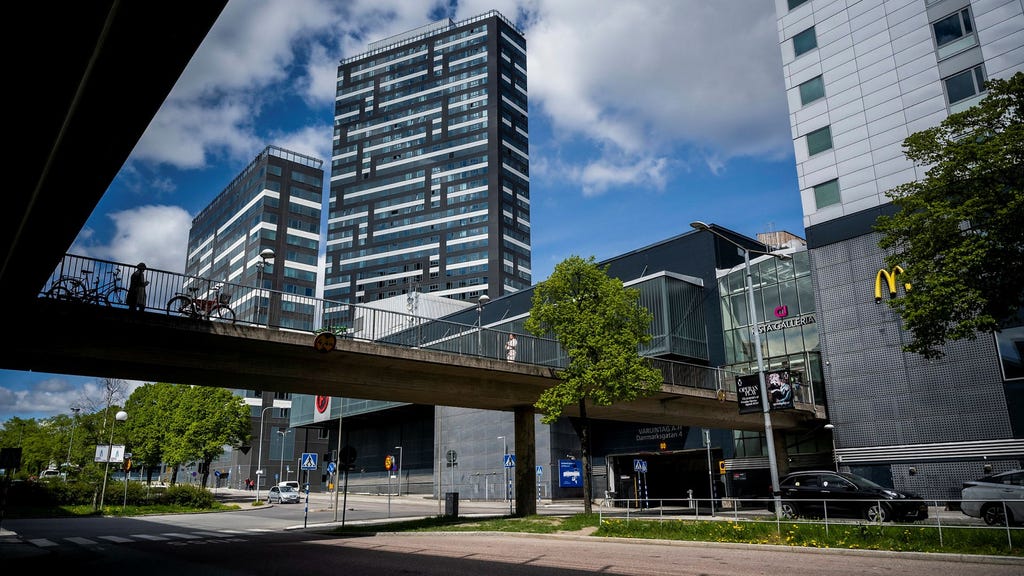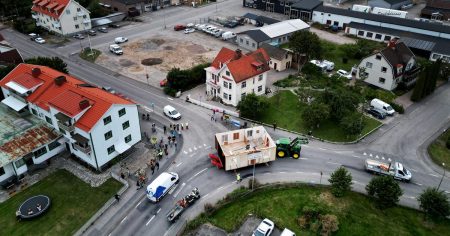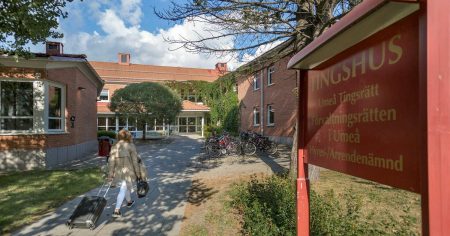The Exodus from Kista: A Looming Crisis for Stockholm’s Tech Hub?
Kista, once a vibrant hub of technological innovation in northwest Stockholm, is facing a growing crisis as major tenants abandon the area amidst escalating concerns about safety and security. The latest blow comes from telecommunications giant Ericsson, which has terminated a lease agreement for 33,000 square meters, representing half of its office space in Kista. This follows the departure of facility management company Coor and the closure of the KTH Royal Institute of Technology’s Kista campus in 2023. While Ericsson maintains that this specific move does not represent a complete withdrawal from Kista, the trend of businesses leaving raises significant concerns about the district’s future. The high vacancy rate, a stark 36% according to Cushman & Wakefield’s recent Office Snapshot report, underscores the severity of the situation. This figure surpasses vacancy rates in any other district in Stockholm, Gothenburg, or Malmö, suggesting that Kista is facing unique challenges.
Underlying this exodus is a pervasive sense of insecurity among businesses and employees. Christofer Fjellner, a local representative, attributes the exodus directly to rising crime rates and a general feeling of unease, pointing to instances where employees have required security escorts to the subway. While Ericsson’s communications director, Ralf Bagner, downplays Kista’s security issues, stating that the company conducts regular risk assessments and implements preventative measures globally, the fact remains that businesses are choosing to relocate. This perceived lack of safety erodes Kista’s attractiveness for businesses, especially in a competitive market where employee well-being is a paramount concern. The situation presents a stark contrast to Kista’s historic reputation as a cutting-edge tech center, highlighting the detrimental impact of security concerns on economic development.
Interestingly, official city statistics present a somewhat different picture. Stockholm’s official safety surveys indicate that Kista’s crime rates and levels of perceived insecurity are comparable to, or even lower than, other districts like Hökarängen and Bredäng. The 2023 survey reveals that 18% of Kista residents express concern about becoming victims of crime, compared to 19% in Hökarängen and 13% in Bredäng. Similarly, 20% of Kista households reported experiencing crime in the past year, compared to 23% in Hökarängen and 14% in Bredäng. This discrepancy between perceived insecurity and official statistics raises questions about the underlying causes of the exodus. It suggests that the issue may be more nuanced than simply high crime rates, perhaps stemming from a combination of factors like media portrayal, anecdotal evidence, and a lack of visible security measures that contribute to a heightened sense of vulnerability.
However, despite the relatively similar statistical figures, a significant 26% of Kista residents state they would move if given the opportunity, citing insecurity and crime as their primary reasons. This figure places Kista third among Stockholm districts in terms of residents desiring to relocate due to safety concerns, trailing only Husby and Hässelby Gård. This statistic reveals a crucial element missing from purely statistical comparisons: the subjective experience of safety. Regardless of official data, the perception of insecurity remains powerful and drives residents’ desire to leave. This stark reality underscores the importance of addressing not just the actual crime rates, but also the factors contributing to the pervasive feeling of unease. Ignoring this perception could lead to a self-fulfilling prophecy, as businesses and residents continue to leave, further eroding the community’s vibrancy and potentially exacerbating the very issues driving the exodus.
The departure of major businesses like Ericsson has a cascading effect on the local economy and community. Reduced employment opportunities, decreased property values, and a decline in local services can create a downward spiral, impacting the lives of residents and threatening the long-term viability of the district. Addressing this complex challenge requires a multifaceted approach. Increased police presence, improved lighting, and community policing initiatives can help to enhance actual safety. Simultaneously, addressing the perception of insecurity is crucial. This can involve public awareness campaigns, community dialogues, and visible security measures that reassure residents and businesses. Investing in social programs, improving public spaces, and fostering a sense of community belonging can further contribute to a more positive and secure environment.
The situation in Kista serves as a cautionary tale for cities grappling with similar challenges. Maintaining a safe and secure environment is paramount for attracting and retaining businesses, fostering economic growth, and ensuring the well-being of residents. Ignoring the perception of insecurity, even in the face of seemingly contradictory statistics, can have devastating consequences. A proactive and comprehensive approach that addresses both the reality and the perception of crime is essential for creating thriving and resilient communities. Kista’s future hinges on the ability of local authorities and community stakeholders to work together to restore confidence and rebuild the district’s reputation as a safe and attractive place to live and work.














